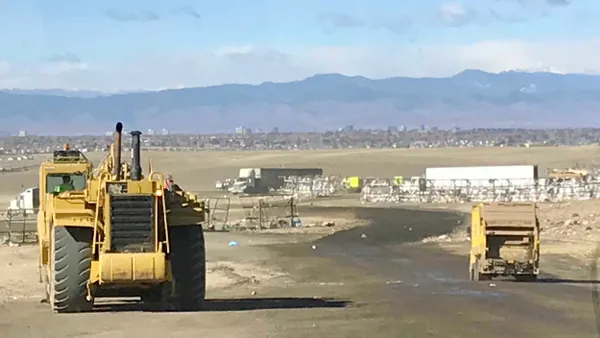Dive Brief:
- The New York State Department of Environmental Conservation (DEC) has identified 53 inactive landfills across Greene and Columbia counties to test for perfluorooctanoic acid (PFOA) and perfluorooctanesulfonic acid (PFOS), according to Hudson Valley 360.
- So far groundwater and leachate sampling testing has occurred at one site, the Hunter Landfill, and levels were found to be under the Environmental Protection Agency's 70 parts per trillion (ppt) advisory threshold. The DEC has also tested two Superfund sites in Greene County that weren't found to be sources of contamination.
- The region is on high alert over per- and polyfluoralkyl substances (PFAS) following the confirmation of contaminated drinking water in nearby Hoosick Falls during 2016. As a result, Rep. John Faso, R-NY, has joined the list of lawmakers pressuring the EPA to release a study on PFAS. So far that hasn't happened, though EPA Administrator Scott Pruitt announced a four-step plan to address PFAS nationally last week.
Dive Insight:
PFAS, which are commonly found in cleaning products, carpets and firefighting foams, are considered a public health concern and could lead to pregnancy issues, cancer or liver disease, among other problems, if consumed through drinking water.
While the chemical is no longer found in new U.S. products, it does still appear in some made overseas and exists in legacy landfills around the country. Improper dumping or discharge from industrial sources is also a key factor.
Debate continues over what constitutes a safe maximum contaminant level, with different interpretations between states and no official policy from the EPA. The agency issued guidance of 70 ppt in 2016 that has largely become the de facto number until a more formal policy is enacted. Yet some disagree about whether that is a reasonable threshold and believe this EPA guidance has distorted the issue.
During a presentation at SWANApalooza in March, one attorney said this had "unleashed a great deal of litigation in the last two years" and that PFOS had become "the chemical bad actor of the day" among environmental groups.
Meanwhile, New York officials have expressed frustration around the rate at which the EPA is working to evaluate the effects of PFAS on public health.
While the EPA recently held its summit and pledged to evaluate setting an official maximum contaminant level, many are still awaiting a tangible study from the Department of Health and Human Services on human health impacts. The EPA has recently updated its website with a timeline of action, noting the agency will travel to states with affected communities this summer, will develop a PFAS Management Plan in the fall and will develop groundwater cleanup recommendations for PFOA/PFOS by September.
The Hoosick Falls situation is seen as a key driver behind this recent attention and has spurred a wave of concern about industrial contamination at sites throughout the Northeast. This has also made PFOA levels a talking point when considering recent landfill expansions in the area, such as the Colonie site operated by Waste Connections. Other high-profile examples include a recent 3M settlement in Minnesota as well as an ongoing case against Wolverine in Michigan.










